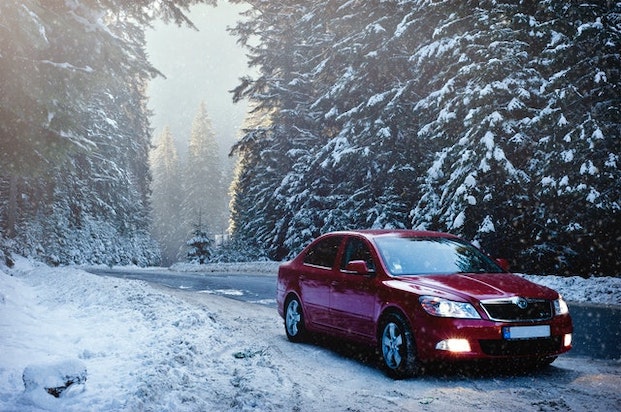5 Safety Tips for Driving in the Winter
January 21, 2022
Learn how to keep you and your loved ones safe while out on the roads this winter.

Brisk winter weather may bring joy to children hoping for a snow day, but it’s a little less inspiring for drivers looking at a difficult trip or commute. Regardless of what type of vehicle you drive, preparing for ice and snow can not only keep you comfortable but may even save your life.
Is your car or truck ready to take the winter head-on? Here are five tried-and-true tips to make sure winter won’t pose an issue for your driving safety:
Check Your Tire Pressure Regularly
Cold weather can and will affect your tires’ ability to hold air pressure, with every ten degrees of cold leaching out about a pound of pressure, if left unchecked. Thankfully, this is easy to do with a handheld pressure checker – available at most auto parts stores – or via an air pump at your nearest gas station.
If you drive a newer model year, you may even be able to check air pressure levels from inside the car, via the dashboard computer: consult your owner’s manual to check.
TIP: While you’re checking your air pressure, be sure that your tires have enough tread to grip the road. Slide a penny, head first, into the long grooves in your tire; if you’re able to see the top of Abraham Lincoln’s head unobscured, it’s time for new tires.
Make Sure Your Wiper Fluid is Topped Off
In warmer months, wipers are mainly used to keep rain from obscuring your view of the road. That means that you may develop a crack or leak in your wiper fluid tank without realizing it.
TIP: Don’t wait to find out the hard way during the first hard snow of the year: regularly check both your tank fluid level and sprayer to ensure both are in good working order.
Replace Tired Batteries Before Winter Hits
Batteries are an undeniable investment, but it’s better to be safe than sorry when it comes to your vehicle’s power needs. Because motor oil becomes more viscous in colder temperatures, your motor has to work harder to start, which in turn demands more from your battery.
TIP: A battery that was on its last legs in the summer can leave you unexpectedly stranded in the winter. To prevent unpleasant surprises, be sure to replace any questionable or older car batteries in the fall before the snow starts.
Remember That Late is Better Than Injured
It may seem obvious, but give yourself more time to get to your destination when icy or snowy weather is expected. You will potentially need time to clear off snow from your vehicle or make a path in the driveway, and traffic will also factor in.
TIP: If you oversleep or can’t give yourself adequate prep time, make a habit of calling ahead to explain you’ll be late. Rushing leads to bad, hasty driving decisions and accidents on slick roads.
Drive Into Skids
If you live in an area where snow and ice accumulate, you’ll inevitably encounter icy roads or patches of black ice before spring comes around. If you find your car skidding in one of these situations, remember to take your feet off the pedals, and turn your vehicle into the direction of the skid, if it is safely possible.
TIP: Panic will often cause drivers to jerk the wheel in the opposite direction, or press the gas or brake pedals, but both of these reactions can actually reduce vehicular control.
Staying safe while driving in the winter is a balanced mix of ensuring your car is prepared to face the cold, and that your driving habits reflect potential winter weather problems. While it can be a challenging few months, getting through them safely will make that first windows-down springtime drive that much more rewarding.